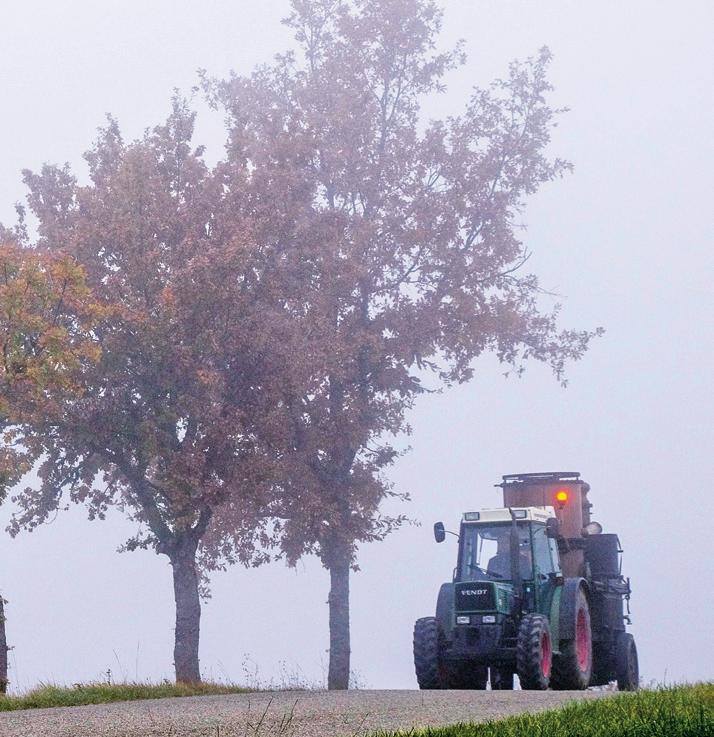
4 minute read
Celebrating La Flamme de l’Armagnac
by Buzzing
We asked Amanda Garnham, Educator for Armagnac at the BNIA (Bureau National Interprofessionnel de l’Armagnac) to explain this ancient Gascony tradition.

Amanda Garnham
Advertisement
Symbolic throughout the world, the burning flame evokes thoughts of life, passion and light and is often lit to mark special occasions. The flame, in this instance, celebrates the end of the vendange (grape harvest), and the beginning of distillation – the distillation of Armagnac, France’s oldest ‘eau-de-vie’ (water of life). The annual lighting of ‘La Flamme de L’Armagnac’ is a moment in our very modern times when we can relive the romance and passion that lived in the hearts of men many years ago. During the ceremony, visitors are welcomed to Armagnac cellars, and bands play their familiar anthems whilst the alambic (the still) is ignited. Guests are then invited to taste their first sample of the years’ eau-de-vie, warming the soul with memories of hot summer sun and whispers of lime trees in blossom.
THE REGION
Gascony is the home of Armagnac and incorporates Gers, Landes and Lot et Garonne. From here it divides again into three soil types, each cultivating an Armagnac with a different character.
• The Bas-Armagnac region, with its capital Eauze, covers parts of Landes and Gers and represents 57% of production. Its sandy soil creates an eau-de-vie that is fruity, light, delicate and well reputed.
• Armagnac-Ténarèze is centred around the town of Condom, covering North West Gers and South Lot et Garonne. This area represents 40% of distillation and its clay/chalk soil gives a full-flavoured, rich eau-de-vie.
• Haut-Armagnac, grown on predominantly calcareous soil in East Gers and part of Lot et Garonne was developed in the 19th-century during a period of great demand, but is now really quite negligible.

Not all Armagnac houses have their own alambic – this roving distiller takes his alambic from estate to estate.
THE PROCESS
Imagine a time before the vendange machines that now crawl like enormous blue snails over the rows of vines. When families toiled to bring in the grape harvest during September and October. The sweat, the tears, sore hands and aching backs, the laughter and the camaraderie. After pressing, vats of fermented grape juice waited patiently in the chai (storehouse) until the fermentation process was complete. The distillation started from mid-October, and today, the tradition continues in Châteaux and Domaines throughout Gascony. Distillation is an act of purification whereby the fermented grape juice is heated and the resulting vapours are condensed with cold. This ancient art is performed as it always has been in an alambic. The alambic Armagnacais is fashioned in hammered or rolled copper, and was consecrated in 1818 by a “certificate” given to the maker, Sieur Tuillière under the reign of Louis XVIII. It remains the same to this day. The eau-de-vie is clear when it flows from the alambic and its alcohol percentage can vary from 52 to 72%, though traditionally it’s between 52 and 60%. In this pure state, the Armagnac is full of fire and spirit. However, one can already appreciate the rich fruity aroma of plums and grapes, and understand the ‘old wives tales’ of its reputed miraculous properties for healing all types of complaint, but that’s another story! Once distilled, the Armagnac is transferred for ageing into new 400L Gascon oak barrels (pièces), whereby it returns to the chai and is kept at a controlled temperature and humidity. In this environment, three vital stages take place:
1. The absorption of tannin from the wood by the Armagnac, giving it its amber colour.
2. Partial evaporation of the eau-de-vie, and with it, a diminished alcoholic degree (about half a degree is lost each year), which is known as ‘la part des anges’ (reserved for the angels)!
3. The emergence of aromas from the wood and wine by slow oxidization of the Armagnac with air that penetrates the barrel.
TROU GASCON
Whilst a large percentage of eau-de-vie is destined to this ageing process and a place on our dinner tables as an “aged” digestif, a proportion is retained for bottling in its pure state and is called Blanche Armagnac, an AOC in its own right. Traditionally drunk ice cold as a palate cleanser during elaborate dinners, the ‘trou gascon’ as it is called is now gaining popularity among foreigners in particular, who liken it to a vodka and drink it similarly, or as a base for cocktails that traditionally use other white spirits. Its versatility is also widely recognised by chefs who value its compatibility with fish, shellfish and charcuterie as well as desserts. Frozen Blanche with oysters or caviar is a must try!
The BNIA in Eauze is Armagnac’s governing body and comprises many producers, brokers and the cooperative ‘caves’. www.armagnac.fr








